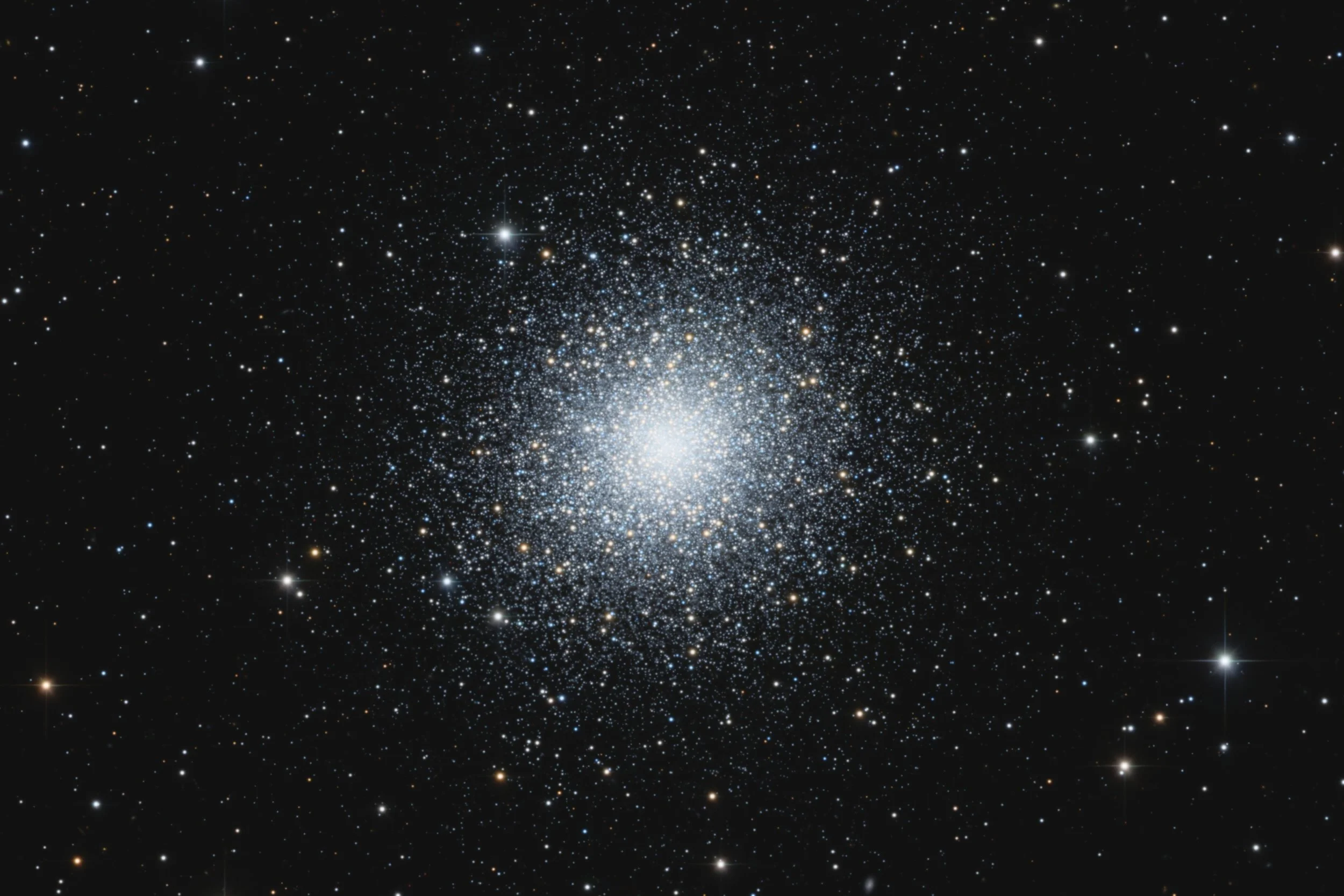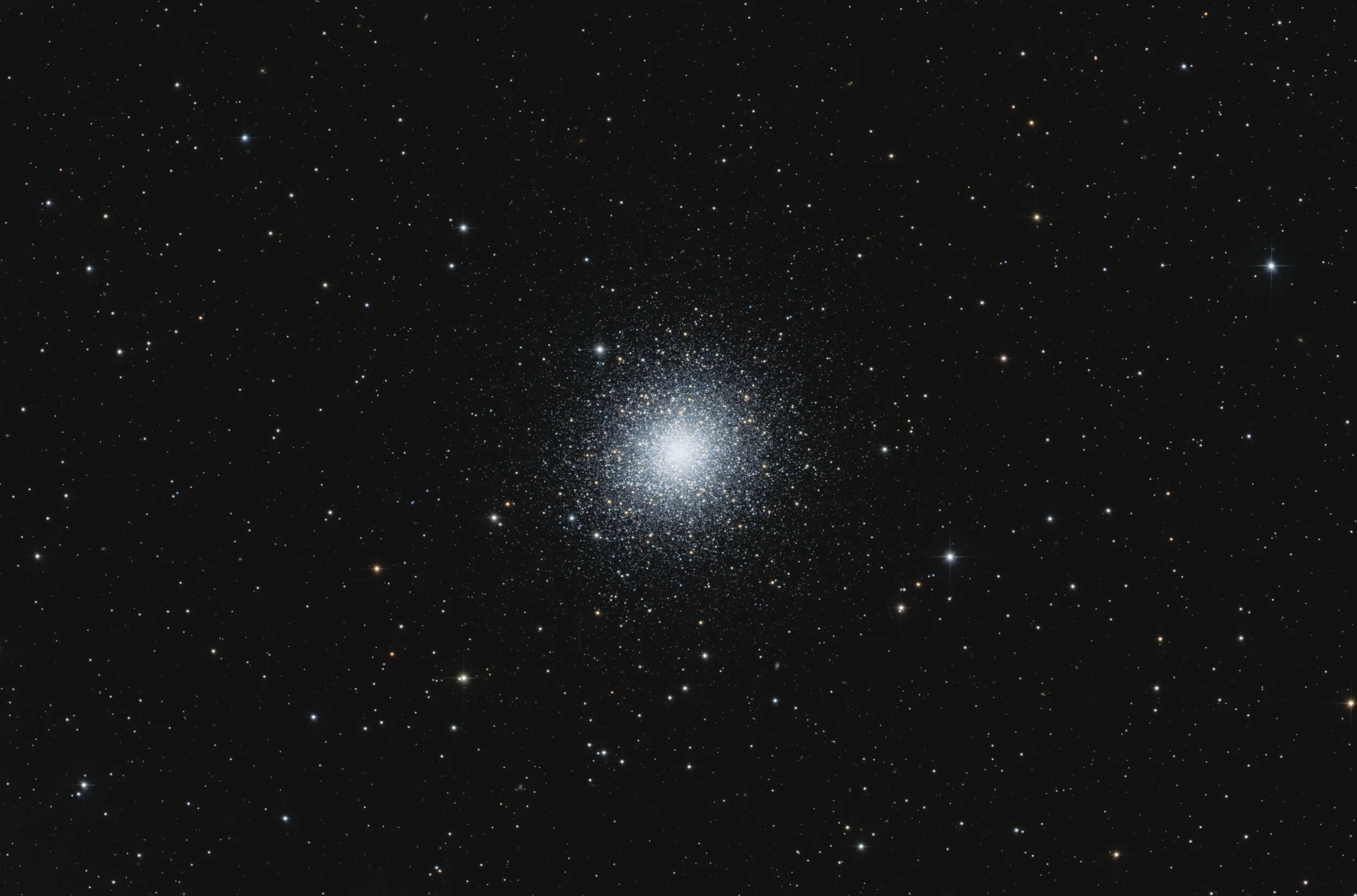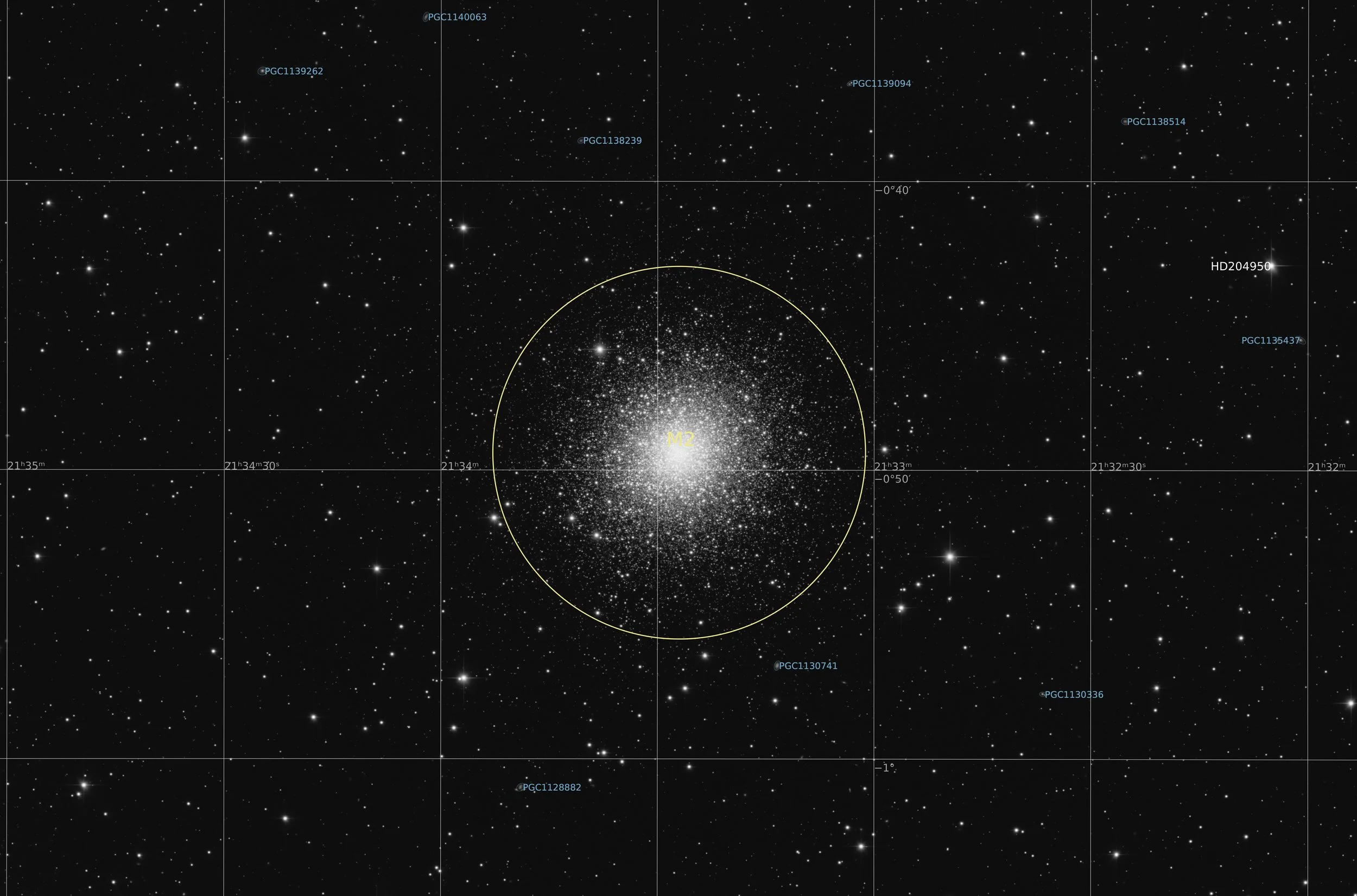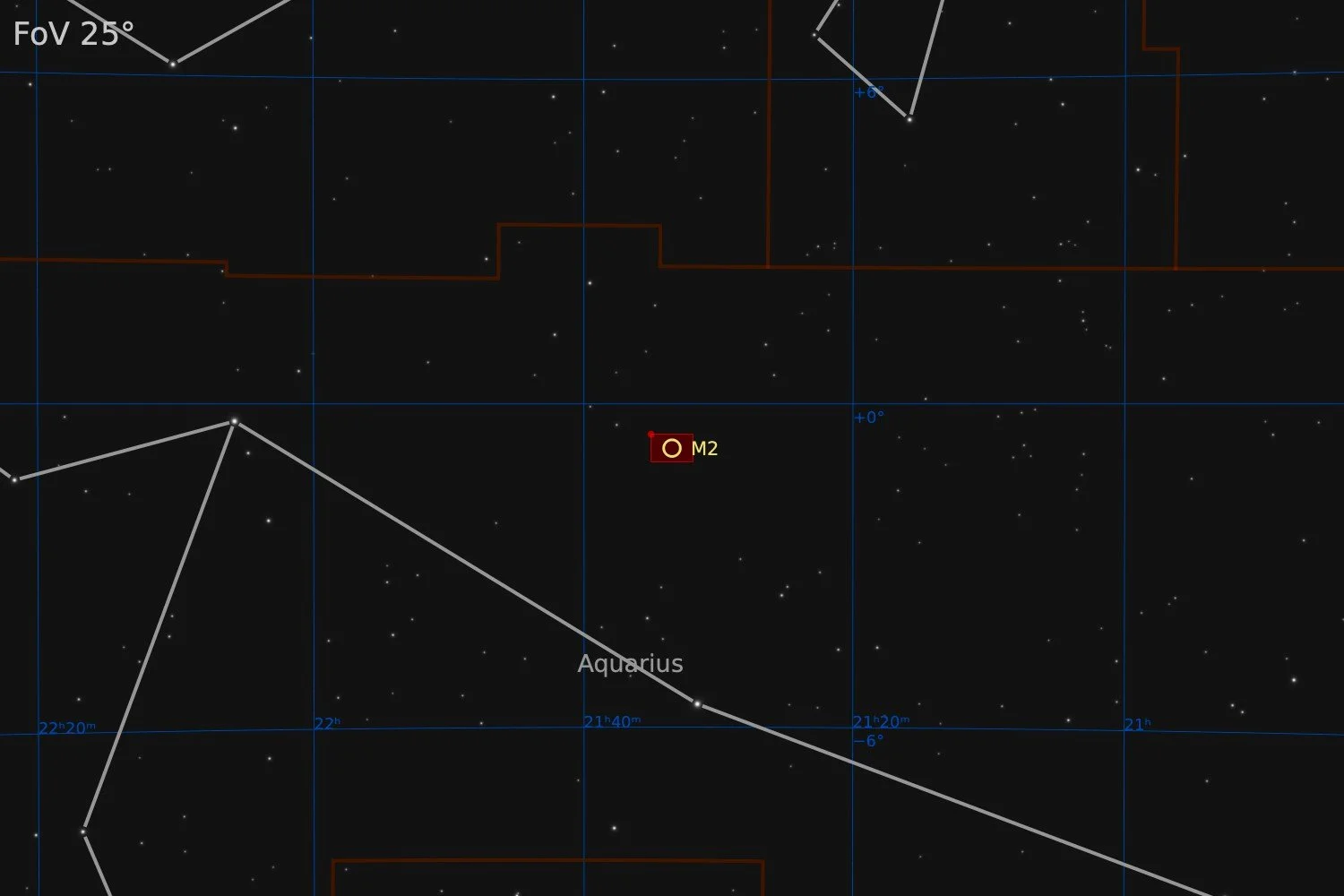M2
NGC 7089
46’ x 31’ | 0.3”/px | 9345 × 6171 px | full resolution
Aquarius
RA 21h 33m Dec -00° 49’ | 0°




Messier 2 (NGC 7089) is a globular cluster in the constellation Aquarius, five degrees north of the star Beta Aquarii. It was discovered by Jean-Dominique Maraldi in 1746, and is one of the largest known globular clusters. Charles Messier rediscovered it in 1760, but thought that it is a nebula without any stars associated with it. William Herschel, in 1783, was the first to resolve individual stars in the cluster. M2 is about 55,000 light-years distant from Earth. At 175 light-years in diameter, it is one of the larger globular clusters known. The cluster is rich, compact, and significantly elliptical. It is 12.5 billion years old and one of the older globular clusters associated with the Milky Way galaxy. M2 contains about 150,000 stars, including 21 known variable stars. Its brightest stars are red and yellow giant stars. The overall spectral type is F4. M2 is part of the Gaia Sausage, the hypothesised remains of a merged dwarf galaxy. Data from Gaia has led to the discovery of an extended tidal stellar stream, about 45 degrees long and 300 light-years (100 pc) wide, that is likely associated with M2. It was possibly perturbed due to the presence of the Large Magellanic Cloud. M2 is located within our Milky Way galaxy, and is one of the oldest clusters of stars designated to the Milky Way. Like most globular clusters, M2 is found within the galactic halo, specifically in the southern galactic cap. This places it right below the southern pole of the Milky Way.
source: Wikipedia
Data Acquisition
Data was collected over 5 nights in mid June 2025, using a 14” reflector telescope with full-frame camera at the remote observatory in Spain. Data was gathered using standard RGB filters, without capturing Luminance. A total of 10 hours of data was combined to create the final image.
Location Remote hosting facility IC Astronomy in Oria, Spain (37°N 2°W)
Sessions
Frames
Equipment
Telescope
Mount
Camera
Filters
Guiding
Accessoires
Software
Planewave CDK14 (2563mm @ f/7.2), Optec Gemini Rotating focuser
10Micron GM2000HPS, custom pier
Moravian C3-61000 Pro (full frame), cooled to -10 ºC
Chroma 2” RGB unmounted, Moravian filterwheel L, 7-position
Unguided
Compulab Tensor I-22, Dragonfly, Pegasus Ultimate Powerbox v2
Voyager Advanced, Viking, Mountwizzard4, Astroplanner, PixInsight 1.9.3
Processing
All processing was done in Pixsinsight unless stated otherwise. Default features were enhanced using scripts and tools from RC-Astro, SetiAstro, GraXpert, CosmicPhotons and others. Images were calibrated using 50 Darks, 50 Flats, and 50 Flat-Darks, registered and integrated using WeightedBatchPreProcessing (WBPP). The processing workflow diagram below outlines the steps taken to create the final image.
No luminance data was collected. M2 is a straightforward object with no particular faint structures. For these type of objects I have been experimenting with capturing only RGB and so far the results are satisfactory.
A large cluster like M2 has a large amount of dynamic range and it is easy to blow out the highlights and loose the ability to see individual stars in the core. To minimise this effect, a clone was made to which HDRMultiScaleTransform was applied. This HDR-file was blended into the main RGB images using Imageblend. Blend mode Darken and an opacity of only 0.25 were enough to get just a bit better detail in the core without affecting the rest of the image in any way.
The full processing workflow is shown below.
Processing workflow (click to enlarge)
This image has been published on Astrobin.
